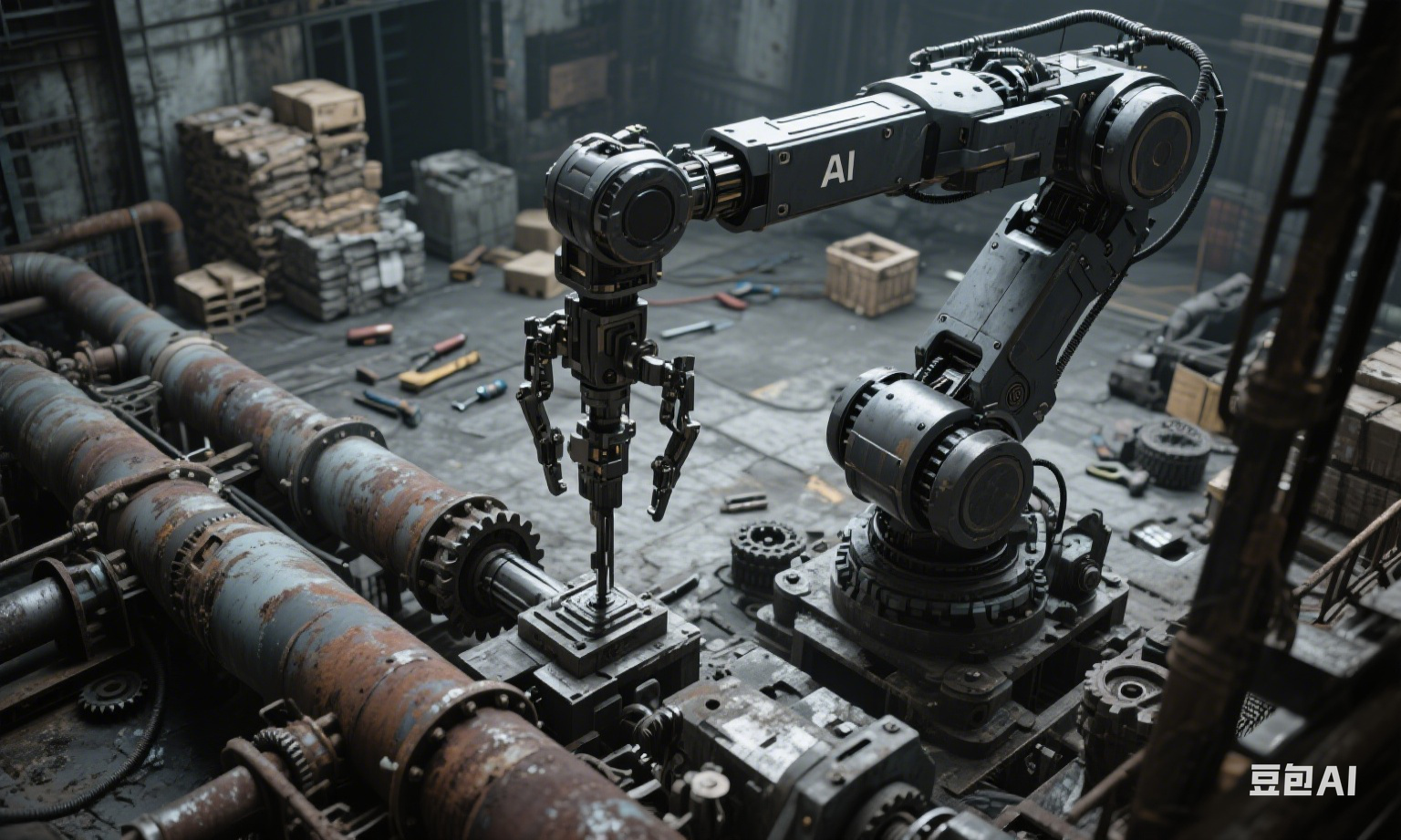The Integration of AI with Supercomputing, Classical Hybrid Architectures, and Edge Computing
阳光 2025-06-06
In today's digital era, artificial intelligence (AI) is advancing at an unprecedented speed and is increasingly integrated into various aspects of our lives. To meet the high computational demands of AI and enable a wider range of applications, the integration of AI with supercomputing, classical hybrid architectures, and edge computing has become a significant trend in the tech world. This article delves into the current state, application cases, and future prospects of this integration.
The Integration of AI with Supercomputing, Classical Hybrid Architectures, and Edge Computing
Introduction
In today's digital era, artificial intelligence (AI) is advancing at an unprecedented speed and is increasingly integrated into various aspects of our lives. To meet the high computational demands of AI and enable a wider range of applications, the integration of AI with supercomputing, classical hybrid architectures, and edge computing has become a significant trend in the tech world. This article delves into the current state, application cases, and future prospects of this integration.
The Convergence of AI and Supercomputing
Supercomputing's Power Boost to AI
Supercomputers, representing the pinnacle of computational power, provide robust support for AI's complex algorithms and large-scale data processing. In deep learning model training, they rapidly handle massive datasets, reducing training time and boosting AI development efficiency. For instance, in climate simulation and astrophysics, the AI-supercomputing combination enhances prediction accuracy for climate changes and celestial body discoveries.
AI's Optimization of Supercomputing Applications
AI is also optimizing supercomputing applications. Machine learning algorithms enable intelligent resource scheduling and management in supercomputers, improving efficiency and utilization. Moreover, AI aids scientists in analyzing complex data from supercomputing simulations, uncovering valuable insights for deeper scientific understanding.
The Synergy of AI and Classical Hybrid Architectures
Features of Classical Hybrid Architectures
Classical hybrid architectures blend traditional computing with emerging technologies like quantum computing. Here, classical computing handles routine tasks, while emerging tech tackles specific complex problems.
Collaborative Effects of AI and Classical Hybrid Architectures
The integration of AI and classical hybrid architectures leverages their respective strengths. Classical computing provides AI algorithms with a stable runtime and basic computational power. Meanwhile, quantum computing accelerates AI applications like optimization and quantum machine learning. This collaboration allows AI systems to handle complex tasks more quickly, enhancing performance and efficiency. For example, in finance and logistics, this combination rapidly identifies optimal solutions for risk assessment and optimization.
The Close Collaboration of AI and Edge Computing
The Rise of Edge Computing
As the Internet of Things (IoT) grows rapidly, edge computing emerges to meet demands for low latency and high security. It pushes computing power and data storage to network edges, near data sources and user devices. In smart factories and connected vehicles, edge computing enables real-time data processing and decision-making, satisfying rapid-response needs.
AI's Role in Edge Computing
AI is crucial in edge computing. Deploying AI algorithms on edge devices enables real-time local data analysis and processing, enhancing environmental awareness and decision-making. For example, in industrial automation, AI-powered edge devices monitor equipment in real-time, predicting and addressing faults to boost efficiency and reliability.
Edge Computing's Impact on AI Development
Edge computing presents new opportunities and challenges for AI. Resource-constrained edge devices drive the development of lightweight, efficient AI models. Additionally, the distributed nature of edge computing offers new approaches for AI privacy and data security.
Application Cases
Smart Healthcare
In smart healthcare, AI and supercomputing process large-scale medical imaging datasets for faster and more accurate disease diagnosis. Classical hybrid architectures optimize the efficiency of healthcare information systems, ensuring data security. Edge computing enables real-time medical device monitoring and remote diagnosis, enhancing healthcare accessibility and convenience.
Smart Transportation
In smart transportation, supercomputing models traffic flows and predicts congestion, offering insights for urban planning. Classical hybrid architectures integrate diverse traffic data sources for efficient processing and sharing. Edge computing enables autonomous driving assistance and smart traffic signal control, improving transportation efficiency and safety.
Industrial Manufacturing
In industrial manufacturing, AI and supercomputing optimize production processes and enhance product quality. Classical hybrid architectures support the operation of industrial IoT platforms, enabling device connectivity and data sharing. Edge computing facilitates real-time equipment fault diagnosis and predictive maintenance, reducing costs and downtime.
Future Outlook
Technological Innovation and Breakthroughs
In the future, continuous innovation will deepen the integration of AI with supercomputing, classical hybrid architectures, and edge computing. Emerging AI algorithms and models will cater to diverse computing environments and application scenarios. Meanwhile, advancements in supercomputing, classical hybrid architectures, and edge computing will further bolster AI development.
Application Expansion and Deepening
The integration of these technologies will expand into more industries, offering effective solutions to complex problems. For example, in environmental protection, energy management, and smart city development, this integration will play an increasingly vital role in promoting sustainable societal growth.
Challenges and Responses
However, challenges such as data privacy, security, system complexity, and compatibility between architectures must be addressed. Future efforts should focus on research and development to establish comprehensive standards and norms, ensuring the healthy and stable development of these technologies.
Conclusion
The deep integration of AI with supercomputing, classical hybrid architectures, and edge computing is reshaping industries by leveraging their complementary strengths. This synergy will drive AI to achieve greater breakthroughs and applications across various fields, paving the way for a smarter and better future.
Over 10,000 users are consulting. Click to apply for a trial.
iso25745电梯节能证书,重庆电梯节能有限公司,电梯节能 采购,pfe电梯节能装置,电梯节能减排,电梯节能问题,电梯节能设计,手扶电梯节能模式,电梯节能模式,电梯节能制度,电梯节能标准,电梯节能器,电梯节能装置价格,电梯节能降耗的措施有哪些,电梯节能管理,电梯节能项目,电梯节能产品,电梯节能技术的应用,电梯节能行业,电梯节能设备厂家,电梯设备品牌,电梯运行管理节能措施,电梯节能技术应用,电梯节能技术分析,电梯节能技术服务供应商,电梯节能技术的作用,电梯智能双碳节能箱,山东电梯节能,广东电梯节能,辽宁电梯节能,河南电梯节能,江苏电梯节能,浙江电梯节能,湖南电梯节能,广西电梯节能,上海电梯节能,四川电梯节能,安徽电梯节能,北京电梯节能,湖北电梯节能,天津电梯节能,河北电梯节能,福建电梯节能,陕西电梯节能,山西电梯节能,广西电梯节能,江西电梯节能,新疆电梯节能,黑龙江电梯节能,贵州电梯节能,内蒙古电梯节能,甘肃电梯节能,吉林电梯节能,云南电梯节能,电梯节能措施有哪些,电梯节能等级,电梯节能改造,电梯节能的前提条件,电梯节能等级标准,电梯节能等级分类,电梯节能等级划分,电梯节能等级认证,电梯节能等级认证证书,电梯有效节能,节能型电梯,电梯节能改造方案,电梯节能改造公司,电梯节能改造技术,电梯节能改造效果,常见的电梯节能控制,电梯的节能措施,电梯的节能技术有哪些,电梯节能减排措施,电梯节能系统,电梯节能系统研究,电梯如何节能,电梯节能减排措施包括,电梯节能减排措施方案,电梯节能降耗管理办法,电梯如何节能减排,电梯节能技术的应用,电梯节能技术分析,电梯节能技术概述,电梯节能技术设计,电梯节能技术实际案列,电梯节能技术现状,国企电梯节能,物业电梯节能,政府电梯节能,电梯节能指标,电梯节能新方案,电梯节能产品,电梯节能新时代,电梯节能策略,电梯节能绿色出行,电梯节能新策略,电梯节能的意义,如何实现电梯节能,电梯节能挑战,电梯节能的工作原理,电梯节能的技术创新,电梯节能的优势分析,电梯节能与绿色环保,电梯节能的转变与挑战,电梯节能关键技术推广,如何实现电梯节能,电梯节能降低运行成本,电梯节能的环保效益,电梯节能降低碳排放,电梯节能环保,电梯节能省钱又环保,电梯节能攻略,云南电梯节能降耗方案,大理电梯节能设备改造,红河州电梯节能技术,玉溪市电梯节能技术,怒江州电梯运行管理节能措施,云南电梯节能技术,电梯节能技术的作用,电梯节能技术服务供应商,电梯运行管理节能措施,节能电梯及控制方式的技术要点,节能电梯怎么节能,电梯节能技术的应用领域,电梯节能设备包括哪些,电梯节能方案设计,电梯节能技术的发展前景,电梯节能降耗方案,电梯节能箱是什么,电梯节能箱的作用,电梯节能改造效果,电梯节能回馈装置,电梯节能回馈装置的优点,国企电梯节能方案,电梯有效节能,电梯有效可行的节能措施,电梯运行管理的节能措施,电梯节能控制措施,常见的电梯节能控制技术,电梯节能技术服务供应商,电梯的节能,电梯节能率,电梯节能管理,东芝电梯节能,商场电梯节能,事业单位电梯节能,政府机构电梯节能,机关单位电梯节能,电梯节能政策,电梯节能资讯,电梯节能新闻,电梯节能案例,电梯节能应用,电梯节能特性,节能环保电梯,电梯怎么节能,电梯节能灯,电梯节能牌,日立电梯节能,电梯节能化,电梯分区节能,轿厢电梯节能,永大电梯节能,节能家用电梯,电梯节能感应,电梯安全节能,电梯安全节能管理制度,变频节能电梯,电梯安全与节能,电梯节能补贴,节能电梯发展,超级电容节能电梯,节能电梯专利,电梯节能服务,电梯节能解决方案,电梯节能装备,别墅电梯节能,别墅节能电梯厂商,电梯节能管理制度,电梯待机节能,贝壳电梯节能,柘城节能电梯,电梯节能设施,电梯节能方法,电梯节能工具,电梯系统节能,洛阳节能电梯,电梯节能运行,屹立节能电梯,林州节能电梯,电梯变频节能,舞阳节能电梯,电梯节能论文,战略电梯节能,电梯节能专利,电梯节能厂商,酒店电梯节能设计,公司节能电梯价格,扶手电梯节能,节能电梯标志图












